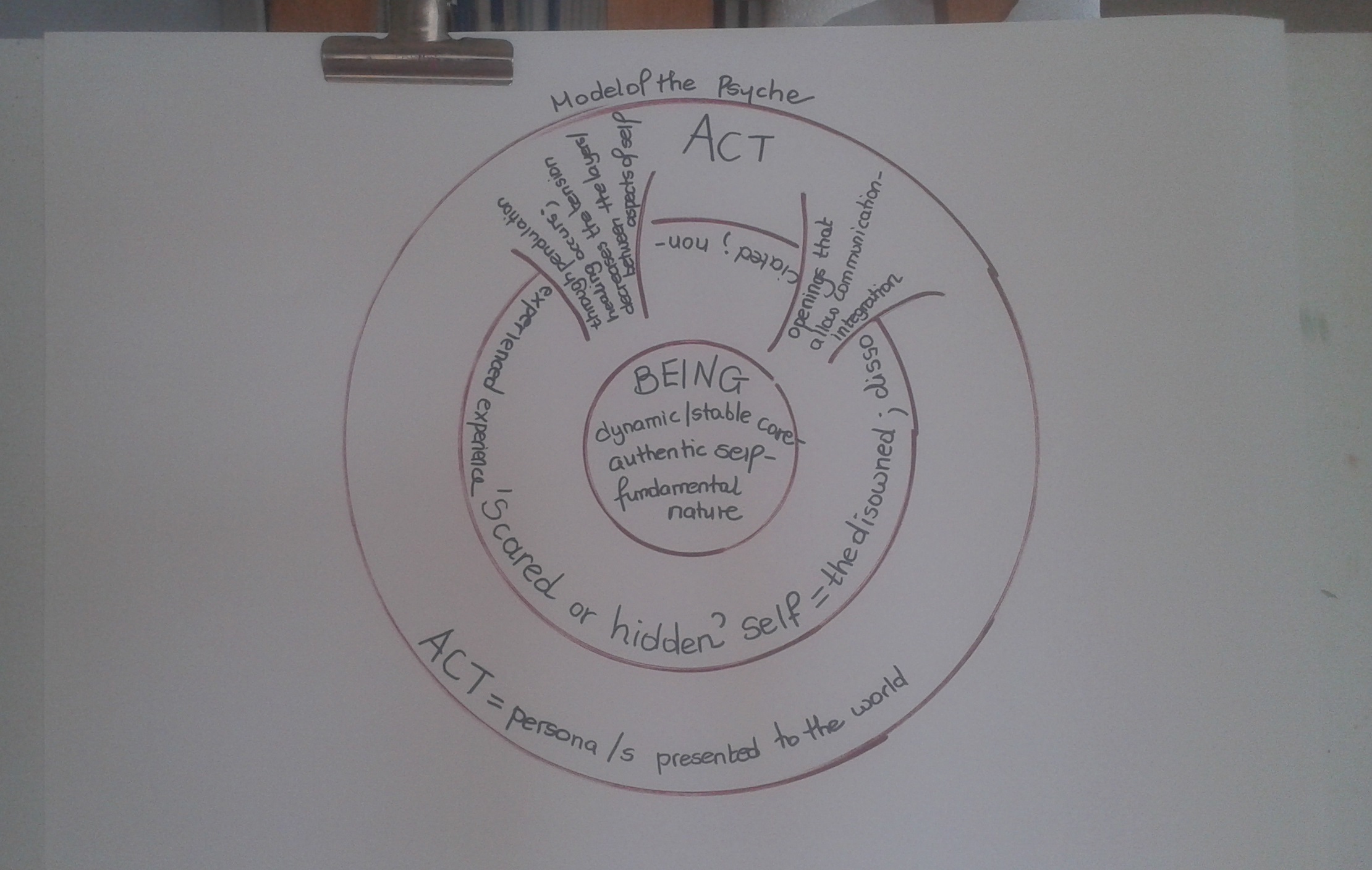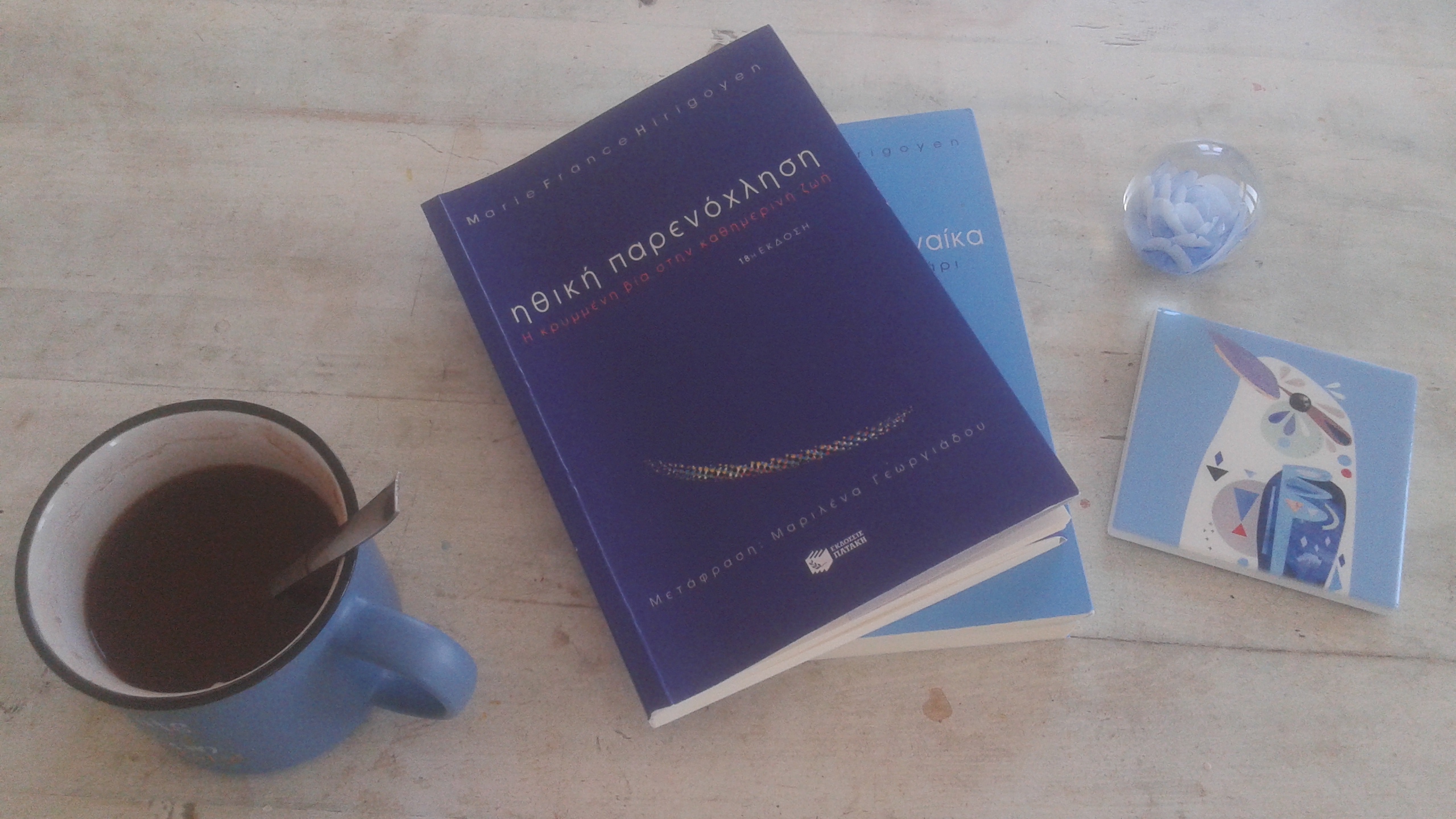July 28th, 2021
Art, a model of the psyche and mind metaphors, and moral harassment (Edited – July 30th)
Τέχνη, ένα μοντέλο του ψυχικού μας κόσμου και μεταφορές σχετικά με τον νου, και ηθική παρενόχληση

Art as a kind of homecoming / Η Τέχνη ως επιστροφή
I think it was in 2012 that I decided to take my artwork to the street, especially, on the island where I have lived for the last 35 years. It was a small act of resistance and claiming visibility among other things. Almost a decade later I decided to close a cycle and mount posters of my more recent art in the street again. Eventually however, I opted for exhibiting in one of the local online news websites instead. Below is the accompanying short passage:
Homecoming – Summer 2021
The most important adventure of our lives is discovering who we truly, to know the breadth and depth of ourselves. Most of us will never get the chance to ponder on the question: Who am I really? or on Mary Oliver’s line: “What is it you plan to do with your one wild and precious life?” This journey is a slow process that involves shedding layers of experiences and cultural messages that do not serve us in our lives and don’t reflect who we really are, and also, recognizing who we want to be. It is the process of recognizing our vulnerabilities and our personal power, as well as, the dynamics of the contexts we are embedded in. As Janet Louise Stephenson wrote “Authenticity requires a certain measure of vulnerability, transparency and integrity.” The process eventually transforms into a sweet homecoming. There are different paths and ways to navigate this journey, but through creativity and imagination, we find our identity and a reservoir of healing for ourselves and the collective. For me art seems to have been both an intrinsic part of who I am and an important tool that has allowed me to navigate the journey. In the quiet, solitary moments of presence and caring that making art requires, a homecoming to the essence of ourselves and to a sense of belonging to the local and to the whole world, take place. Poet Paul Celan wrote: “Poetry is a sort of homecoming.” These eighteen acrylic paintings are part of a number of paintings I have worked on these last two and a half years. Each one reflects a small step in my own homecoming journey.
Mind metaphors and visual exploration of our mental landscape
Μεταφορές σχετικά με τον νου και διερεύνηση του πνευματικού / ψυχικού τοπίου
I’d also like to refer to some material from Dr Rick Hanson’s last week’s meditation podcast. In this podcast he discusses metaphors of the mind and suggests ways of exploring our mental experience, sub-personalities and different aspects of ourself, through the creation of visual displays of our inner landscape.

One metaphor is that of a committee, another is that of a mansion with sunny rooms, messy ones and the rooms in the basement, where the suppressed, the painful and the implicit material lies. Yet another metaphor is that of a landscape with lakes, rivers, mountains and valleys, deserts, etc. We can engage in drawing or making collages and observing what insights come up. Dr Hanson also presents a visual model of our psyche, which contains three concentric circles. We develop this structure to survive in the world. The inner most circle could be termed BEING and this is our core, who we truly are, our fundamental nature, a vast awareness, our temperament perhaps, a dynamic and stable sense of who we are, One might expereince this as a central core of unbounded self. Susan McConnell (2020), informed by the IFS model, suggests that “At the core of every individual, when all the extra is peeled away, is this essential loving, creative, wise, courageous state.” The next circle contains what could be termed “the scared or hidden self”, which one might consider as all we have disowned, the non experienced experience, the suppressed and dissociated, the implicit memories. Finally, there is the outer circle, termed ACT, which is what we want to present to the world, who we want to be seen as. It is our persona/s, our presentation to the world in different contexts. Tension exists between these layers of experience or layers of the psyche and healing and growth require integration and communication between the different layers.Rick Hanson (2020) says “One breath at a time, one synapse at a time, you can gradually develop an increasingly unshakable core inside yourself.” The more we grow and heal the less friction there is, and the more often we can reside in a place of authenticity.
Workplace Suffering and Emerging Pathologies
Ταλαιπωρία / Παρενόχληση στο χώρο εργασίας και αναδυόμενες παθολογίες

Finally, I am sharing an extract from an article with the title Workplace Suffering and Emerging Pathologies by Marie-France Hirigoyen (L’information psychiatrique Volume 84, Issue 9, 2008). Dr Marie-France Hirigoyen is a French psychiatrist, psychoanalyst, psychotherapist, victimologist and writer, specializing in moral harassment in diverse contexts, especially, mobbing behaviour in the workplace. She defines moral harassment as the attempt to psychologically annihilate the other with words, gestures, hints without the use of physical violence. I have just started reading two of her books translated into Greek, which I bought locally this summer, which could inform future posts. One is about psychological and emotional abuse of women within familial contexts and the other is about moral harassment and the hidden violence in our daily lives, particularly in work contexts. Read extracts from the article below:
“The Narcissistic Society: The Rise of Individualism and Loneliness
Η Ναρκισσιστική Κοινωνία: Η Άνοδος του Ατομικισμού και της Μοναξιάς
This increase in narcissistic pathologies is explained by the fact that such personalities are well-adapted to the modern world. These changes in the average individual reflect the mutations caused by company life and economic warfare, and are conditioned by the myth of the homo economicus, engaged in a “struggle for life” even at the expense of others. Individualism is a primary characteristic of our time. Until the 1980s, individuals thought of themselves as members of a collective and knew that this collective would support them. Peer groups or trade unions would mediate in conflicts. Today, it’s every man for himself. Relationships of cooperation and solidarity have been eroded, and relationships with institutions have lost their value. Common standards for what counts as good work have become less clear, and a sense of shared values has dissolved. The individual is at the center of the world, but they are alone there – a pawn in a multitude of others just like them. In a world where we are mere clones, everyone wants to be unique. But how does one stand out from the crowd at work? How can a person’s individuality be recognized when their leaders speak with a forked tongue, telling each individual to express their personality, but requiring their employees to fit into a mold? Conflicts, too, are increasingly sidestepped. They no longer manifest themselves at a collective level, but rather at an individual one.……..
Workplace Suffering and Emerging Pathologies What Can Be Done?
Ταλαιπωρία / Παρενόχληση στο χώρο εργασίας και αναδυόμενες παθολογίες. Τι μπορεί να γίνει;
Psychosocial risks are an inescapable problem in occupational health. It is up to psychiatrists, psychologists, sociologists, and specialists in workplace issues to convince business leaders to take concrete measures to monitor and prevent such dangers. There must be help for executives who find themselves responsible when one of their workers is seriously depressed, and even criminally responsible when complaints about harassment are raised. Steering between management by terror and demagogy, it can be difficult for them to establish a management style that is simply respectful of people. ….. Employers have an obligation to protect their employees’ health. The claiming that some employees are merely fragile does not hold: they are simply human, with all the fragility that naturally brings with it……
Conclusions / Συμπεράσματα
The changes people undergo in response to a changing society are irremediable and management must take it into account. If employers want to improve their employees’ morale once more, they must reintroduce respect for the human element into their management practices…….. Boundaries have also shifted. People are being asked to adapt, and even to over adapt. They must be able to rebound from failures, not questioning themselves and attributing responsibility for their mistakes to others. They must cast aside empathy and become aggressive enough to symbolically kill friends and enemies and lie to close a deal. In such a “game,” those with a hypertrophied Self succeed better than others in imposing their will. The degradation of work makes professional success less and less dependent on competence and far more on luck or opportunism. Hard work and good results are no longer enough. One must also make oneself visible, make oneself valued, expand one’s network. Appearance and visibility count for more than results and efficiency. A large address book and a good network count for more than talent. In a world of appearances, what matters is not what we are, but what we show ourselves to be—not the distant consequences of our actions, but their immediate, apparent results. This is the main reason perversion has become widespread: there is a general tendency to treat others as tools to be discarded when they are no longer useful. In addition to direct work pressures, there are much more subtle social pressures: one must be fit, happy, fulfilled, and high-achieving, because individuals are only valued for what they seem to be……. Developing an adaptive “false self” leads people to lose touch with their true inner feelings and to live an existence without authenticity. The race to succeed creates lonely people who are vulnerable to depression. If we want to reduce absences related to mental health problems, we must accept the vulnerabilities of people who cannot be in top form at all times. We must always consider people holistically. ….. The consequence of these changes is that our societies are becoming increasingly unequal: on the one hand, there are those who play the performance game, the unsentimental ones who are able to conceal their feelings or to let nothing affect them; on the other are the sensitive, over fragile ones, who are perpetually discarded (Marie-France Hirigoyen).”
